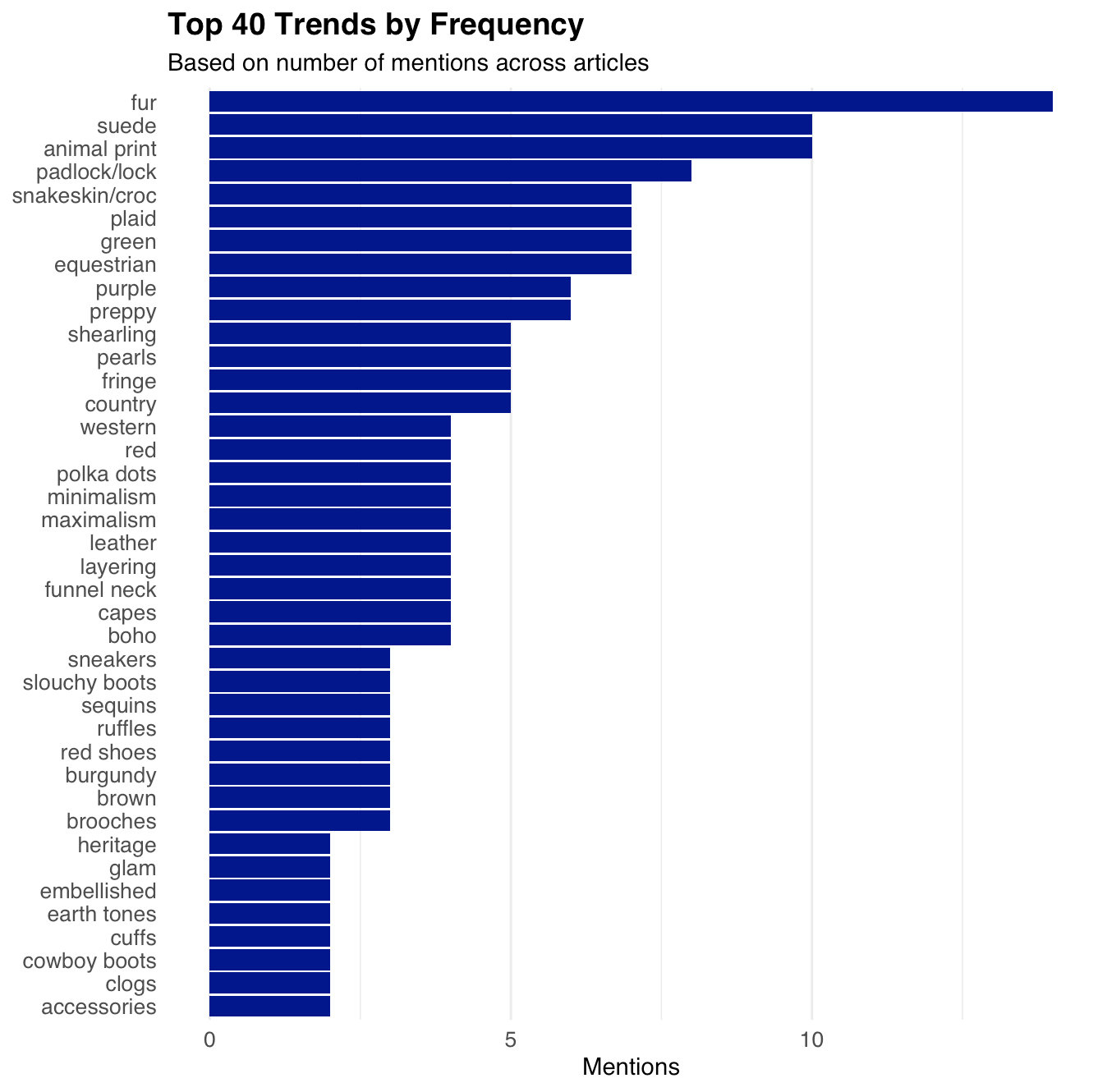Network analysis of fall fashion predictions
What trends people are talking about and what algorithms we find ourselves in
It’s the first week of September, which means every fashion publication, commentator, and trend forecaster is rolling out their list of predictions for fall. And after an unexpected break from content this past August, I wanted to know what everyone was talking about online, what were the big trends being predicted, and what I had missed out on.
So! I originally wanted to just do a meta-analysis of fall fashion trends where I scraped the content from all of the articles discussing the fall fashion trends (both recent ones, as well as when people were discussing the FW25 runways earlier in the year).
A quick note on the methodology: I used R (a programming language) to pull in articles from the Google News RSS feed, building a dataset of links to articles whose titles included terms like (‘fall 2025’ OR FW25) AND (fashion OR trends OR runway). This resulted in a dataset of 32 articles. From there, I used R to scrape the article content using the .p HTML node. Finally, I used base R to count the most frequently mentioned words in each of the articles after removing stopwords and manually filtering out overly generic terms like “pants” or “dress.”
This resulted in a dataset of the most common trends being mentioned across 32 FW25 trend forecasting articles.
I then wanted to see how these trends were connected and built a network analysis. In the first iteration, we can see that the size of the blue circles correspond to how often the trends were mentioned across the 32 articles, and the grey line indicates of these trends were mentioned in the same article. The line’s width indicates how often the co-occurred in the same article, with the thickest line indicating that these two trends co-occurred in at least 6 articles.
But then! When I started actually reading through some of the articles, I noticed that certain trend predictions tended to cluster together. It felt like different groups of writers were pulling from the same sets of references (or perhaps being influenced by the same algorithms), creating distinct pockets of trend forecasting that didn’t fully overlap with each other.
To understand if these clusters of trend predictions actually existed, I used a community detection algorithm (specifically the Louvain method) to identify clusters within the network (groups of trends that frequently appear alongside one another).
This analysis was able to identify 3 clear clusters of trend predictions that give us insight into the 3 distinct categories/themes of fashion trends for this fall.
Keep reading with a 7-day free trial
Subscribe to Style Analytics to keep reading this post and get 7 days of free access to the full post archives.




